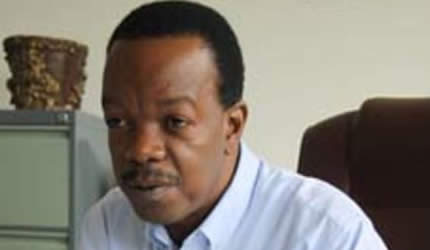Jeffrey Gogo Climate Story
Anna Brazier’s Climate Change in Zimbabwe: A Guide for Planners and Decision-Makers is a factual account by experts clearly explaining complicated issues on the challenges and solutions to climate change here, and elsewhere.
The 253-page book, a revised and updated version of the first edition of 2015 published by German non-governmental Konrad-Adenauer Stiftung in partnership with the Zimbabwe Government, involves experts explaining complex climate sub-topics in simple, clear and captivating form.
Using a series of pictures, graphics, and information boxes, Brazier, a Harare-based sustainable development consultant, outlines climate change in basic, everyday language that is easy to understand, capturing the major aspects of the science, from causes to impacts, adaptation to mitigation, and climate politics to funding.
In her own words, “the book is written in English.” She light-heartedly laughed off the often cryptic nature of scientific texts, at the book launch attended by key climate interest groups, including Zimbabwe’s climate change director Washington Zhakata and German Ambassador Thorsten Hutter, in Harare on December 12.
Through case studies, supported by colour-coded text that draws attention to important messages, Brazier tells a story of the Zimbabwean experience with the cross-cutting issues of climate change, a story of struggle, devastation, resilience, but also opportunity.
She employs a method long thought redundant, in the most effective way. The beginning of each of the 8 chapters is preceded by an introductory paragraph, summarising the contents of that specific section.
Similarly, a brief appears at the bottom of each chapter, recapping the issues discussed. This is an important technique, designed to drill the message home, by all means, as well ensuring that if one missed the point at the start, they won’t miss it for a second time, at the tail.
Brazier makes attempts at making climate change look human, even though remotely at times, exploring the local and global impacts of the phenomenon while juxtaposing such with detailed discussions on the science behind climate change and its effect on human health, economies, communities and the natural environment.
For example, in the Third Chapter, the author explains how a 2ºC or 3ºC temperature increase in this Century, as is largely expected, relates directly to the individual.
She says: “A temperature change of a few degrees does not sound like much. Our bodies can hardly detect the difference between a 0,5ºC and 1ºC, so it can be hard for us to understand why a two or even three degrees would make such a difference.”
“However, the earth is very sensitive to changes in climate,” said Brazier.
The book is predominantly targeted at lawmakers and policymakers, but can be useful to all. By adopting pronouns such as “our”, “we” and “us” to describe climate issues affecting Zimbabwe, the reviewers take ownership of climate change, refraining from the trappings of turning the science into the familiar, detached “theirs” and “ours” narrative.
The terminology makes the book a truly Zimbabwean product, written by Zimbabweans for Zimbabweans, contrary to the often alienated, generic views expressed in global reports such as those produced by the UN Panel on climate change.
Minor grammatical and factual errors such as adding an ‘s’ to a word that needed it not, or referring to contributing reviewer Elisha Moyo as Elijah Moyo, or even claiming Zimbabwe generates 80 percent of its electricity from Kariba hydropower station, have potential to lose the climate change greenhorn.
But on the whole, do not overshadow the important message that the book seeks to put across.
It is a useful addition to the growing body of literature on climate change in Zimbabwe, particularly packaged with law and policymakers in mind, two constituencies that have been criticised for slowing down action on climate change due to their lack of familiarity with the science.
Moreover, it could not have been better timed.
The book comes at a time Zimbabwe is going through a unique political and economic reawakening that could have massive implications for the climate sector, moving forward.
There are promises it will be revised for the third time, and perhaps a fourth, to keep track with the fast-paced lane of climate change, where new evidence is emerging rapidly, almost on a daily basis.
Also, there are those who think it can be further simplified, or expanded to include detail on some aspects around the role of religion in climate change, which is missing from the current text, and others.
But then again, the book is only a guide, and has been endorsed by the Minister of Climate Oppah Muchinguri Kashiri.
Brazier said the book could never have been exhaustive and will require continuous revisions and updates.
The author expects that “climate change will test the resilience of the Zimbabwean people”, and warned that “those in rural areas, especially children, women, and the disabled among the rural poor, will bear the brunt of the changes.”
The latest version was read and reviewed by figures in the environmental, business, civic society and academic communities, including Mr Zhakata, the head of climate change in the Environment, Water and Climate Ministry, and professors from Chinhoyi University of Technology and the National University of Science and Technology.
God is faithful.
jeffgogo@gmail.com.











